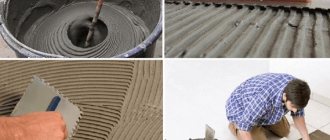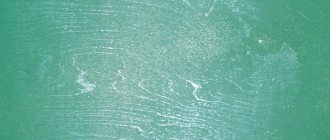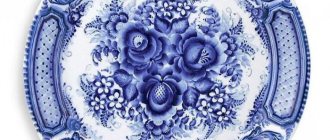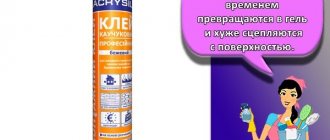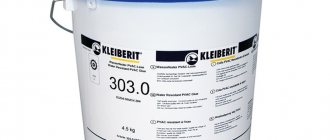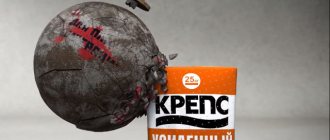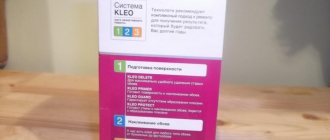Peculiarities
The Plitonit company is a joint Russian-German production of construction chemicals intended for professional and household use.
Tile adhesive Plitonit B is one of the names of the huge range of products of this brand. It is designed for laying ceramics and porcelain tiles indoors. The composition of the solution includes cement binders and adhesives, as well as fillers with a maximum grouping of grains up to 0.63 mm and modifying additives that give it increased adhesive qualities.
Tile adhesive Plitonit: types
Products of the Plitonit brand are classified according to the solution’s resistance to moisture and are produced in several modifications.
1. Plitonite A.
This type of adhesive is created for all types of ceramic tiles with water absorption from 1%, dimensions no more than 30x30 cm.
2. Plitonite V.
This type of Plitonite, which can be bought at a hardware store or ordered online, is used indoors and outdoors.
Plitonite (tile adhesive) A and B is used for cladding surfaces made of reinforced concrete (reinforced concrete), concrete, brick, gypsum plasters, lime-cement bases, on cement surfaces, cellular concrete bases.
Features of Plitonit A and B glue:
- suitable for covering heated floors;
- can be used as a masonry mortar when installing slabs and blocks made of gas, foam, cellular concrete, sand-lime brick;
- used in any type of premises;
- has increased water resistance and ductility;
- holds well on a vertical surface.
3. Plitonite B mosaic.
White tile adhesive Plitonit, created for tiling surfaces with mosaics.
Characteristics:
- can be used for fixing stone, ceramic, glass, decorative mosaics, small-format marble tiles;
- has adhesion of 1 MPa;
- Designed for indoor and outdoor work.
4. Plitonite Bprofi.
Designed for covering the floor with any type of ceramic tiles, porcelain stoneware (up to 45x45 cm) indoors and outdoors. In addition, the composition can be used when installing mosaic tiles of dark colors.
5. Plitonite Bpro.
Designed for surface cladding:
- porcelain stoneware (size up to 45x45);
- ceramic tiles;
- dark mosaic tiles.
General characteristics of Plitonit Bpro and Bprofi glue:
- forms high-quality adhesion;
- easy to use;
- used in the process of cladding surfaces made of reinforced concrete, cellular concrete, gypsum plasters, bricks, plasterboard bases, plasterboard, tongue-and-groove slabs, etc.;
- ideal for installing tiles on indoor pools, balconies, terraces, plinths;
- can be used for cladding ceilings with mosaic tiles;
- used in underfloor heating systems.
6. Plitonite B maxislayer (thick-layer adhesive).
Used for covering surfaces with any type of tile.
Characteristics:
- used for fixing relief-shaped tiles of different thicknesses, as well as large-format building materials;
- creates simultaneous leveling of the surface and its cladding;
- has increased adhesion and plasticity;
- recommended when creating a heated floor system;
- used for cladding indoor pools, plinths, terraces, balconies.
7. Plitonite V.
Designed for covering surfaces with any type of tile.
Characteristics:
- fits perfectly on a vertical surface;
- can be used for installing tiles in underfloor heating systems, as well as swimming pools;
- used on a variety of surfaces;
- It is characterized by high plasticity, frost and water resistance.
8. Plitonite C is light.
This type of Plitonite, the price of which can be checked on the Internet, has low consumption and is designed for tiling complex surfaces with any type of tile.
Characteristics:
- has excellent adhesion;
- in comparison with other compositions it has 40% less consumption;
- recommended for facing complex surfaces;
- he is easy to work with.
READ MORE: TechnoNIKOL insulation 69 photos characteristics dimensions and installation technology of facade slabs for walls their density and application
9. Plitonite C marble.
White adhesive designed for glass, mosaic and marble tiles.
Peculiarities:
- has increased plasticity;
- excellent adhesion;
- does not form limescale;
- does not change the color of the tile;
- Recommended for lining swimming pools and heated floors.
10. Plitonite S.
Created for cladding complex surfaces (cement-bonded particle boards, bases painted with alkali paints, lined with old tiles, coated with alkali-resistant adhesives) with any type of tile.
Peculiarities:
- used for heated floors, swimming pools;
- can be used as an intermediate layer when carrying out putty and plastering work;
- differs in frost and water resistance;
- has good ductility.
11. Plitonite Wb.
Fast-hardening building material for all types of tiles.
Peculiarities:
- this type of glue is used when there is a need for urgent commissioning of the premises;
- has excellent adhesion to the surface;
- increased frost and water resistance;
- convenient to use.
12. Plitonite-AquaBarrier HydroGlue.
Peculiarities:
- used for lining various water tanks with glass, porcelain, mosaic tiles, etc.;
- has increased resistance to chlorinated water;
- does not change the color of the tile;
- recommended for contact with drinking water;
- has increased elasticity.
13. Plitonit-SuperFireplace ThermoGlue (W).
Heat-resistant adhesive with reinforcing fibers. Created for lining fireplaces and stoves.
Peculiarities:
- in addition to its direct purpose, it can be used as a grout, putty;
- has increased adhesion;
- multifunctional;
- has strength.
PLITONITE S
Conditions of work
During work and over the next 3 days, it is necessary to ensure that the air temperature is maintained within the range from +5ºС to +30°С. The temperature of the mortar mixture, base and tiles during the work is from +10°C to +30°C. When performing external work, the surface must be protected from precipitation.
Preparing the base
The base for the cladding must be strong, free from dirt, dust, oils, fats, and flaking elements. Gypsum bases and surfaces with high water absorption must be treated with PLITONIT primer before starting facing work. Further work is carried out after the primer has completely dried.
Preparation of mortar mixture
To mix the dry mixture, use water from the drinking water supply. Mixing ratio: 1 kg of dry adhesive mixture requires 0.22-0.26 liters of water (5.5-6.5 liters per 25 kg). Pour the dry mixture into a pre-measured amount of water at room temperature and mix for 2-3 minutes until a homogeneous consistency is obtained using an electric mixer or electric drill with an attachment (rotation speed no more than 600 rpm). Let the mortar mixture sit for 5 minutes and stir again. When stirring again, it is allowed to add water up to the maximum value of the above ratio. The time for using the ready-made mortar mixture is no more than 4 hours (drafts and high temperatures reduce this time).
Operating procedure
Apply the finished mortar mixture evenly onto the base using a smooth trowel and give it a toothed comb structure (the size of the trowel teeth depends on the size and type of tile). The mortar mixture should be applied to an area that can be tiled within 30 minutes (open operating time). Place the tile on the adhesive mortar mixture and press it into it with small turning movements. The position of the tile can be adjusted over the next 30 minutes. Drafts, high temperatures, as well as highly absorbent surfaces reduce the open operating time and adjustment time. If a dried crust forms on the surface of the applied glue, the mortar mixture must be removed and replaced with a new one. The tiles are laid with open joints and leveled using appropriate devices. When tiling swimming pools, facades, terraces, balconies, heated floors, as well as tiles with a back side relief height of more than 2 mm or a size of more than 30x30 cm (if large-format porcelain stoneware is being laid), in order to avoid voids under the tiles and to increase adhesion strength, it is necessary Apply glue using a combined method (both on the base and on the back side of the tile). Glue is applied to the base as described above. On the back side of the tile, the glue is first applied with a notched trowel, and then evenly leveled over the entire area of the tile with a smooth trowel. Material consumption with the combined method increases by 1.3 kg/m² with a layer thickness of 1 mm.
Attention
Walking on the tiled floor and grouting joints is allowed no earlier than after 24 hours. Turning on heated floors and carrying out further work on the facing gypsum board (moisture-resistant plasterboard) is possible no earlier than 3 days after laying the tiles. The specified time characteristics are valid at ambient temperature (20±2)°C, relative air humidity (60±10)% and may vary under other temperature and humidity conditions. When carrying out work, you should follow the instructions for conducting general construction work and safety precautions in construction. Before laying the tiles, do not soak the tiles; clean the back side of the tiles from dust and dirt. During the work process, the mortar mixture should be stirred periodically. It is prohibited to introduce additional water into the finished mortar mixture. The color of the mixture may change from batch to batch, depending on the place of release, etc. The color of the mixture does not affect compliance with the stated technical characteristics of the product. May contain a small amount of reinforcing fibers in the composition.
Precautionary measures
The mixture belongs to hazard class 4 (low-hazard substances) according to GOST 12.1.007. When performing work, use gloves, safety glasses, and respiratory protection. Avoid contact of the mixture with skin and eyes. In case of contact with eyes, rinse immediately with plenty of water. KEEP AWAY FROM CHILDREN!
Transportation and storage conditions
The mixture should be transported in covered vehicles in accordance with the rules for the transportation of goods. Bags of dry mixture should be stored in covered, dry rooms under conditions that ensure the safety of the packaging and protection from moisture. The shelf life in the manufacturer's container is 12 months from the date of manufacture, subject to transportation and storage conditions.
Compound:
Portland cement, quartz sand, functional additives.
Manufacturer's Warranty
The manufacturer guarantees that the mixture meets the technical requirements provided that the consumer complies with the conditions of transportation, storage and the instructions of these instructions. The manufacturer is not responsible for non-compliance with the technology for working with the material, as well as for its use for purposes and conditions not provided for in these instructions. Deviation from net weight in accordance with GOST R 8.579-2002. The product is approved for use in all types of civil construction (Aeff<370 Bq/kg according to SanPin 2.6.1.2523-09 (NRB-99/2009).
Advantages and disadvantages
The use of Plitonit B glue has its advantages.
- Acceptable product price.
- High elasticity of the material.
- Preparing glue for work does not require any special skills. It mixes easily with liquid even without a mixer.
- Has excellent adhesion to vertical surfaces.
- Moisture and frost resistance of the product. Can be used for outdoor work, as well as in rooms with high humidity.
- High performance.
- Installation takes a minimum amount of time.
- Wide range of use.
There are basically no disadvantages when using this adhesive solution, but if installation work is carried out incorrectly, the facing materials may lag behind the surface. The material is available in bags of 5 and 25 kg; it is not possible to purchase the mixture in a smaller volume.
Wallpaper glue Plitonit
The raw material for the production of this type of glue is methylcellulose.
Advantages of glue
- Environmentally friendly.
- As humidity changes, the glue adapts to environmental conditions, restoring adhesion to the surface.
- It is compatible with various building materials.
- Has excellent adhesive ability.
Plitonit wallpaper glue does not form lumps when mixed with water and has antiseptic properties. It is compatible with lime and has no odor.
Types of glue
1. Plitonite Special.
Designed for gluing heavy, dense, vinyl, convex wallpaper, photo wallpaper. Suitable for common building substrates.
2. Plitonit Classic.
Designed for all types of paper wallpaper and common building substrates.
Specifications
Main parameters:
- the largest volume of grains is 0.63 mm;
- appearance – gray, free-flowing homogeneous mixture;
- sliding of tile material from a vertical surface – 0.5 mm;
- open operating time – 15 minutes;
- adjustment time for tile material – 15-20 minutes;
- viability of the finished mixture – no more than 4 hours;
- maximum thickness of the adhesive layer – no more than 10 mm;
- temperature conditions for installation work – from 5 to 30 degrees;
- carrying out troweling work - after 24 hours;
- temperature of the adhesive joint during operation – up to 60 degrees;
- frost resistance – F35;
- compressive strength – M50;
- adhesion strength of tiles to concrete surface: ceramics – 0.6 MPa, porcelain stoneware – 0.5 MPa;
- Shelf life – 12 months.
Adhesive for ceramic tiles Plitonit A 25 kg
Plitonit A is a basic cement adhesive. It is used in rooms with normal and high humidity for laying ceramic tiles. Designed for application to floors and walls with a concrete, reinforced concrete, or brick base. As well as a surface treated with cement and gypsum plaster. Requirements for tiles: size – no more than 30*30 cm, water absorption – no less than 1%. The glue is flexible, it is convenient to mix it with water and apply it to the base.
Application of tile adhesive Plitonit A:
- floor finishing with ceramic tiles, suitable for “warm” floor systems;
- cladding of vertical surfaces;
- additionally as: adhesive for aerated concrete, mortar for bricklaying and leveling mixture for walls.
Conditions for work:
The surface for applying the cladding must not be deformed or subject to shrinkage, must be durable, clean, free of grease, without roughness, without any application (adhesives, paints, etc.).
If the base on which you plan to apply the tiles has increased moisture absorption, or is a gypsum surface, then before starting work you need to apply a primer to it and then dry it completely.
In the absence of heat or drafts, the finished mortar mixture can be used for about 4 hours. The temperature of the mixture during work should be +10 ... +30 C.
After carrying out work in the room, it is necessary to maintain a temperature range of +5 ... +30 degrees Celsius for 3 days.
Note:
You can only grout seams or walk on the floor after laying the tiles 24 hours later. When tiling heated floors, they can be turned on after 7 days. During the work, the solution must be mixed several times. You cannot add water to the prepared mixture.
Specifications
| Maximum filler fraction | 0.63 mm |
| Displacement of tiles during vertical laying | no more than 0.5 mm |
| Dry mixture consumption | 1.8 - 4.5 kg/m2 * |
| Water consumption | 0.20-0.24 l (1 kg of mixture), 5.0-6.0 l (25 kg of mixture) |
| Opening hours | 10 minutes |
| Tile adjustment time | 10 minutes |
| Viability of solution | 4 hours |
| Adhesion strength of ceramic tiles to concrete at the age of 28 days, not less | 0.5 MPa |
* Mixture consumption is indicated on the condition of a flat surface. The method of application, the professionalism of the artist, and unforeseen losses are not taken into account.
If you are interested in Plitonite A, you can buy it in our online store at an attractive price and pay on the spot. Delivery is carried out throughout St. Petersburg and the region, pickup is also provided. You can order mixtures by calling 779-30-35 and leaving your order with the manager.
Technological requirements when working with Plitonit glue
In order for the repair to be carried out efficiently, it is necessary to perform sequential actions when laying tiles.
READ MORE: Mosaic for the kitchen 41 photos mirror and glass tile mosaic in the interior wall finishing options in black and other colors
Preparation
Plitonit B glue must be applied to a strong, even, strong base that is not subject to deformation. It is recommended that the working surface be thoroughly cleaned of various types of contaminants: debris, dust, dirt, old coating (glue, paint, wallpaper, etc.), grease. Slots and cracks are sealed with putty, and after that the working surface is treated with a primer solution.
If the coating has a loose structure, then it needs to be primed in 2 layers. Floors are also treated with a special compound to prevent mold from forming under the tiles, this is especially necessary for bathrooms.
Preparing the mixture
Before you start preparing the tile mixture, you need to take into account certain recommendations.
- All components used must be at room temperature.
- For mixing, tools and containers that are completely free of contamination are used. If they have previously been used to prepare the mixture, then the remaining solution must be eliminated. They can affect the properties and qualities of the freshly prepared composition.
- To make it easier to pour the mixture into the container, you can use a trowel.
- For kneading, use only clean water, preferably drinking water. Technical fluid may contain alkalis and acids, which will negatively affect the quality of the finished solution.
For 1 kg of dry mixture you will need 0.24 liters of water, respectively, for 25 kg of adhesive you need to use 6 liters. Water is poured into a suitable container and the dry mixture is added. Mixing takes about 3 minutes, you can use a mixer or a drill with a special attachment, the main thing is to get a homogeneous consistency without lumps. The readiness of the mixture is determined in such a way that when applied to a vertical surface it does not drain.
The finished mixture is set aside for 5 minutes, after which it is mixed again. In some cases, it is possible to add water, but it is not recommended to exceed the values indicated in the instructions.
Subtleties of application
- Plitonit B adhesive is applied using a smooth spatula in a thin, uniform layer. The coating of the adhesive solution must be given a comb structure for better adhesion to the tile.
- If a dried crust has formed on the surface of the applied solution, the layer is removed and replaced with a new one. The tile is placed on the glue and pressed into the mixture with gentle turning movements. The position of the facing material can be adjusted within 20 minutes. When installing tiles, it is recommended to use a laser level.
- At the end of the work, excess adhesive solution is removed from the tile seams. Peeling is done with a knife until the mixture hardens. The front side of the tile is cleaned of dirt with a rag or sponge soaked in water or a special solvent.
- When tiling floors with a heating system, as well as laying large tile materials, in order to avoid the appearance of voids under the finished coating and to increase adhesion, experts recommend applying adhesive using a combined method. The composition is applied both to the prepared base and to the back side of the tile. Apply the adhesive to the tiles using a notched trowel, and then use a smooth trowel to level the layer.
You can often hear the opinion that you can walk on the tiles on the floor without waiting for the glue to completely dry. This is strictly prohibited because:
- if the adhesive solution has time to dry, but has not gained maximum strength, then there is a high risk of the masonry shifting;
- Damage to the tile material may occur, especially in areas where voids have formed due to insufficient mortar applied.
- The surface must be clean, strong, and dust-free.
- Before applying glue, the base should be cleaned of oil and cement glue.
- When working with glue on a concrete surface, the latter should not be subject to shrinkage.
- Glue consumption varies from 3-5 kg per 1 m2.
- All compositions of the Plitonit brand are applied at a temperature of 5–30°C.
- If the glue belongs to the standard category, then after its application the surface can be walked on only after 24 hours.
READ MORE: Electric walk-behind tractor characteristics and choice of walk-behind tractor for a summer residence
Work order
Before starting work, you must ensure that the environmental conditions comply with the manufacturer's requirements. It is important that the temperature during operation does not exceed +30 degrees and does not fall below +5 °C. The same temperature should be used when drying the laid tiles within the next three days from the date of work. You can start using the floors and walls earlier - 24 hours after the installation of the tiles is completed (for adhesives with express drying, this time is lower). At the same time, it is allowed to start grouting the tile joints.
Preparing for work
First you need to assess the condition of the tile itself. Adhesion of the adhesive may decrease if the base material contains dirt, dust, or grease. The tiles must be cleaned, dried thoroughly, and should not be soaked in water. Next, it is important to make sure that the base is ready for work. It must be durable, strong, without falling off parts or elements. Otherwise, such areas will peel off along with the laid tiles. It is important that the base is not subject to deformation, and is also level, without serious differences.
Other recommendations for surface preparation:
- carefully fill all cracks and cracks, then sand them;
- clean dirt, grease, dust, wash, degrease the base;
- prime porous materials (for example, aerated concrete) 1-3 times;
- for priming drywall, it is better to use compounds of the same brand, which include antiseptic and fungicidal additives;
- floors must be treated with antifungal solutions, especially if they are located in rooms with high levels of humidity.
Preparing the mixture
All components for preparing Plitonit glue must be at room temperature (dry mixture, water). The glue itself needs to be kept warm for at least several hours. For mixing, clean buckets and other containers are used, in which there are no foreign impurities or contaminants. The tools should also be clean: a construction mixer, a drill with an appropriate attachment. Residues of glue and other mortars must be removed from tools, otherwise the quality of the composition will decrease.
The water for preparing glue must also be clean; it is better to take drinking water, since technical water usually contains foreign chemical impurities. You should use a trowel to pour out the dry mixture. For 1 kg of powder take 0.24 liters of water. A large package of 25 kg requires about 6 liters of liquid. The order of dilution is as follows:
- pour water into the container;
- add dry powder;
- mix the glue with a mixer.
As a result, it is important to obtain a completely homogeneous solution, in which there are no lumps. If the mixture is prepared correctly, it will not flow down when applied to the wall. In this case, the desired consistency is obtained. Next, the material should be left for 5 minutes, then mixed again. The solution must be stirred periodically during its use (4 hours).
Subtleties of application
Apply the glue using a smooth or notched trowel. Professionals recommend using a smooth tool, but then giving the adhesive layer a comb structure - this will further increase adhesion to the base. You should not apply glue to too large an area at once - a dry crust may appear on the composition, which will have to be removed and replaced with a new solution.
Features of working with Plitonit glue:
- after applying the glue, place the tile on it, make careful turning movements, while pressing the individual elements into the solution;
- crosses are placed between the tiles, observing the correct size of the joint between the tiles;
- within 20 minutes, adjust the location of the tiles, if necessary, using a laser level to clarify;
- excess glue is immediately removed using a metal spatula or knife, without allowing it to harden;
- The outer side of the tiles is wiped off from the glue with a rag or a damp sponge.
When laying tiles on heated floors or when using large-format materials, voids may form under the covering. In this case, it is recommended to use a combined method of applying glue - on the base and on the inside of the tiles. For this purpose, use only a notched trowel, otherwise the layer will be too thick. If necessary, the glue is then leveled with a smooth tool.
It is very important not to use the floor until the mixture has completely dried (24 hours). If the glue has not reached maximum strength, the tile may shift, and where the layer of the product was too thin, it may even peel off. Heavy physical impact on the floor (for example, moving furniture) cannot be exerted for 3 days, and it is prohibited to connect the heated floor in the next 7 days. On the contrary, additional uniform heating of the air in the room will speed up the complete drying of the glue.
When working with glue, you must use personal protective equipment, which is especially important when mixing the solution. To prevent the dry mixture from getting into the respiratory tract and eyes, you need to use a respirator and goggles. Be sure to wear gloves on your hands while working. If the product gets on the skin, wash it with plenty of water.
Flow calculation
The instructions on the packaging indicate the approximate consumption of tile adhesive on any surface, but the volume of material required can be calculated independently. Adhesive consumption depends on many factors.
- Tile size: if it is large, then the glue consumption will be large.
- Material for making tiles. Regular tiles have a surface with a porous structure that absorbs glue better. Porcelain tiles, on the contrary, absorb less adhesive solution.
- Surface evenness: a smooth surface will require less glue than a corrugated one.
- The quality of the prepared base.
- Specialist skills.
For tiles measuring 30x30 cm, the average glue consumption will be approximately 5 kg per 1 m2 with a joint thickness of 2-3 mm. Accordingly, for cladding 10 sq. m area you will need 50 kg of adhesive. For smaller tiles, for example, 10x10 cm, the average consumption will be 1.7 kg/m2. A tile with a side of 25 cm will require approximately 3.4 kg/m2.
Consumption rates
The average consumption per 1 m2 of Plitonit glue may vary depending on various factors. It is 1.7-5 kg/sq.m. m and is determined by the following indicators:
- tile size (the larger it is, the greater the consumption due to increased layer thickness);
- tile material (tiles absorb more glue than ceramics);
- the evenness of the base and the quality of its preparation (more glue will have to be applied to uneven surfaces);
- method of applying the solution (solid or notched trowel);
- master skills (beginners often allow glue to be lost, the adhesive layer to be uneven, etc.).

